UZBEKISTAN SEPT 22 2015
- Brian Belmont

- May 25, 2020
- 20 min read
Updated: Jun 14, 2020
Sept 22, 2015

I forgot to set my alarm again but as I had prepared the night before, my shower, shave and dress too little time, I was down at breakfast with 20 minutes to eat. I had a but if cereal, a crepe with fruit sauce and some pasties.
9 am...time to go. The group gathered and we were off to our first stop of the day,
Gul E Amir Mausoleum - Some of us had visited the night before and enjoyed the peaceful exploration as we had it to our selves. Today, it was busy, people everywhere. They were all trying to see Timur’s resting place.
I learned more today about the history of the site. It is quite tragic in many ways.
Unfortunately, since the end of 17th century the long period of decline of Samarkand has begun. The city has lost the status of capital which has been transferred to Bukhara. The great Silk Road bypassed the city, meanwhile great historical monuments stood empty and forgotten.
Only after the Second World War extensive restoration work in Gur-Emir has begun. In the 1950s the dome, main portal and minarets were refurbished. By that time majolica tiles mostly fell away. The 1970s, was followed by the restoration of the interior. Neither the Madrasah nor the Khanaka of initial Muhammad Sultan’s complex were reconstructed. With the resurgence of the interest to Tamerlane after the founding of the Republic of Uzbekistan in 1991 it intensified the care of his places of worship.
In 1740, king Nader Shah of the Afsharid Empire tried to carry away Tamerlane's sarcophagus. Nader idolized Timur. He imitated Timur's military prowess and, later in his reign, Timur's cruelty, but in the process of removal the sarcophagus broke in two. This was interpreted as a bad omen. His advisers urged him to leave the stone to its rightful place.
Tamerlane's tomb was opened shortly before the German Invasion into the Soviet Union, although the inscription on his tomb threatens great misfortune to any of his rest breaker. Exhumation of Timur in 1941 was made under the direction of Soviet scientist and anthropologist Mikhail Mikhaylovich Gerasimov who was able to reconstruct Tamerlane's facial features from his skull, and it was also confirmed that he was 172 cm in height and would have walked with a pronounced limp. Also it is rumored that Soviet Union won a victory in the Battle of Stalingrad owing to the re-burial of Timur's bones, according to Muslim rites in 1942.
The tomb is filled with mosaics of heavenly colors, blues and golds dominate.It feels like a place of great royalty. I’ve never seen a Muslim structure so adorned. Not all of the decoration was geometric as fanciful details and urns with flowers, all in gold, dominated. The Uzbek elemental designs were part of the adornment. What an interesting mix of styles. I really liked it as the melding revealed a unique end result. Amazing!
Now for the pièce de résistance, Registan Square -
The Registan was the heart of the ancient city of Samarkand of the Timurid dynasty, now in Uzbekistan. The name Rēgistan means "Sandy place" or "desert" in Persian.
The Registan was a public square, where people gathered to hear royal proclamations, heralded by blasts on enormous copper pipes called dzharchis - and a place of public executions. It is framed by three madrasahs (Islamic schools) of distinctive Islamic architecture.
The three madrasahs of the Registan are: the Ulugh Beg Madrasah (1417–1420), the Tilya-Kori Madrasah (1646–1660) and the Sher-Dor Madrasah (1619–1636). Madrasah is an Arabic term meaning school.
Upon the approach there are three buildings in U setup.
We stated on the left side - Ulgh Beg Madrasah
Ulugh Beg Madrasah on the west side is the original madrasah, finished in 1420 under Ulug Beg (who is said to have taught mathematics there; other subjects included theology, astronomy and philosophy). Beneath the little corner domes were lecture halls, and at the rear a large mosque. About 100 students lived in the two storeys of dormitory cells here.
Many of the medressas' former dormitory rooms are now art and souvenir shops. I found a shop where a craftsman was making mosaic tiles in the manner that they had been made during the construction of the structures in the square. He had some simple designs and some of the complex ones with multiple colors. They are all wonderful and it was hard to decide but…I did and ended up with one of each kind. Whoohoo.
In the high season a variety of traditional shows are put on for tourists in the Sher Dor courtyard, including mock Uzbek weddings and kurash, a form of Uzbek wrestling. There are also tacky evening sound-and-light shows put on for tour groups in the square, which can usually be watched for free from afar. For an amazing view visitors can climb to the top of a minaret for 3000S. It was mentioned to us but the guide said that we didn’t have the time.
Continuing to the back of Registan Square is Tila Kari Medressa -
The Tilla Kari madrasa was commissioned a decade after the adjacent Shir Dar madrasa (1619-1636) by the same patron, Shaybanid feudal general, Alchin Yalantush Bahadur between 1646-60. Once part of the complex built by Timur's wife, Tuman-Aka in the fourteenth century, the site had housed the Mirzoi caravan sarai. Built originally as a theological seminary, this madrasa with its large prayer hall soon became Samarkand's congregational mosque with the collapse of the Bibi Khanum Mosque (b. 1399) and the dismantling of Alikeh Kukeltash Mosque (1439-40).
The Tilla Kari madrasa was conceived as the last, largest and most embellished structure of the famed Registan Square. It's name means ''gold-covered', referring to the lavish gilt decoration of its mosque's domed chamber. Yalantush defined the northern edge of the Registan Square with the Tilla Kari's 120 meter-long façade, relieving the square's oppressive symmetry with the off-axis placement of its preponderant dome. The composition is strengthened with the use of domed corner minarets on the main elevation that harmonize with the square's character and scale. Exterior elevations were richly decorated with polychromatic tiles with geometric patterns. Four, recessed alcove bays flank the entrance portal, and mark a significant change from earlier unbroken elevations. The Tilla Kari also deviates from the ensemble's dominant madrasa typology of with internal court iwans and rear elevation minarets. It has a larger built-open volume ratio, with a small square courtyard. The Tilla Kari madrasa makes reference to a madrasa typology seen in Bukhara in the sixteenth and seventeenth centuries, with its deeply recessed five-sided portal niche and small cylindrical corner towers crowned by cupolas. The madrasa consists of student rooms with preceding vestibules surrounding three-sides of a square courtyard, with the domed mosque occupying the fourth. At the center of each façade is an iwan with a tall pishtaq; the iwan to the west gives access to the mosque.
The mosque has a central chamber below the great dome, and is connected to domed side galleries by archways. The dome rises in four stages. A high rectangular plinth forms the primary prayer hall and rises above the madrasa walls. Next, two terraced octagonal tiers rise to support a high cylindrical drum. The dome's monochrome blue color contrasts with the drum's polychromatic decoration with calligraphic bands. The interior space is flat-roofed, though a domed effect is achieved by an intricately crafted tromp l'oeil, composed of blind arches supporting three tiers of muqarna rings. The central chamber is richly gilt in relief ornamentation (kundal) and embellished with glazed mosaic faience inlay (kashi after their production center in Kashan) and incised stucco. Shades of blue and gold dominate the interior. The marble mihrab's intricate multi-colored and gilt motifs are magnificent specimens of the Mawara'u'n-nahr region's famed workmanship.
The madrasa has been the focus of several rebuilding initiatives in the 1920s, 1930s and 1950s by Russian archaeologists. The originally incomplete dome was built while corner minarets and portals were entirely rebuilt. The interior was restored in 1970. Despite these efforts, the structure's plinth is still threatened by seepage from the high water table. This, along with extreme seasonal temperature fluctuations has caused large surfaces of decorative paintings and tile facings to peel off. The city's World Heritage status has ensured global surveillance and concern, but insufficient financial assistance for required restoration and upkeep expenses.
This is so significant to human kind that it must be saved. A higher fee for visiting should be paid but it should go for the upkeep. This might be difficult as there is much corruption. Maybe UNESCO can assist with this.
On the right as you face the square is Sher-Dor Madrasah -
Sher-Dor Madrasah was built on the Registan Square, Samarkand in 1619-1636. The name is translated as “Madrassah with Lions”. It is the distorted and exaggerated reflection of the Ulugbek Madrasah, which is located just opposite, on the western side of the Registan Square. The difference in age between them is 200 years. Sher-Dor has larger area and sizes, but it yields to its “elder brother” by the quality of finishing works.
On the outside and inside this Madrasah is decorated with bright ornaments of glazed brick, walls and towers are covered with majolica of various patterns of climber flowers and quotations from Kuran on Arabic. But some part of finishing is irretrievably lost, though scientists, historians and restorers try to recover the initial appearance of Sher-Dor Madrasah.
By architecture the Sher-Dor Madrasah almost repeats the Ulugbek Madrasah, i.e. it is the square building with inner yard, khudjras (cells) for students and two rooms for classes. The Madrasah was considered as the modern building of that time, because the latest architectural innovations were used at the construction. Moreover such grand building has a set of constructive peculiarities, which make it one of the best architectural monuments in Samarkand.
In addition the Madrasah of Sher-Dor has some features. In the center of the arch above the entrance there is the image of swastika, which from ancient times was the symbol of abundance and fertility. Also there are images of tigers with the sun on their backs on each side of the arch.
For the whole period of existence the Madrasah of Sher-Dor has been restored many times. The largest works were conducted in the beginning of XX century by Soviet architect, out of them the most famous was V.G. Shukhov. Today this monument of Samarkand architecture is one of the main sights of the city. In 2001 the Madrasah of Sher-Dor entered the UNESCO World Heritage List.
So, there is much of the history but, I find it hard to fully express how it felt to be in the special place where so much history took place. How important it was for not only trade but ideas and culture being transported from Asia to Europe and Africa. A huge part of our world change due to the interactions with the many peoples that traveled through this (center of the ancient world).
It was time fore a break, lunch. Well…I had very little to eat. I think I was losing weight. I had a tasty yogurt soup (Uzbek for water lol) some tomatoes and cucumbers and that’s it. I did have a bit of wine but it was very low octane.
We all sat a what was, in essence, a large square day bed with a table in the center. It was a low table to you took your shoes off and crossed your legs to eat at the table. Some went to a regular table but I wanted this experience. This is Central Asian style and I must do as the locals.
The…facilities, were odd. Now Ive used toilets everywhere and have seen many, many things but this was strange. There was a very large room, well tiled, with a perfect rectangle in the floor. There was a toilet tank in the corner but no bowl. So…the hole was it. That’s fine..no problem with that but it was such a prepared space to have…only a hole. Outside of the toilet room was an old fashioned wash stand…much character.
A short van ride away was the a great, ancient observatory. Among historical monuments of Samarkand observatory takes particular place, constructed by Ulugbek in 1428-1429 on one of the hills on height, at the bottom of Chupanata altitude.
By Babur’s words, which saw the observatory, it was three-storied covered with beautiful glazed titles building of round form 46 meters in diameter, 30 meters in height. In the main hall huge instrument was placed for observations of Moon, Sun, and other stars of the vault of heaven.
Observatory was unique construction for its time.The basis of observatory was giant goniometer vertical circle), radius of circle was equal 40,212 meters, and the length of arc was 63 meters. The main instrument-sextant was oriented with amazing exactness by line of meridian from south to north.
Test establishments of modern astronomers Kastalsk and Sheglov are the evidence to it. Sizes of the main instrument, lucky construction, scientific knowledge of Ulugbek and his companion-in-arms provided amazing exactness of astronomic observations. "Experience had known about planets movement, is delivered for keeping to this book" - Ulugbek was writing. In this work basics of astronomic observations are summarized, made by east scientists.
Exactness of observations of Samarkand astronomers is amazing because they were made without help of optical instruments, with unaided eye. Astronomic tables contents coordinates of 1018 stars. His catalog did not lose its value in our days. With amazing exactness made the calculation of the length of star year, which by Ulugbek’s calculation is equal to 365 days 6 hours 10 minutes 8 seconds. Actual length of star year by modern data is 365 days 6 hours 9 minutes 9,6 seconds. Thus the mistake is only less that one minute.
After Ulugbek’s death observatory was destroyed and robbed by religious fans. Only in 1908 archaeologist Vyatkin found first document where location of observatory was mentioned. Unfortunately only underground part of sextant and basis of the building were saved. By found documents scientists made the model of the observatory.
Remarkable scientific center was destroyed, valuable library was plundered, and scientists were chased away. Sheikhs announced the hill as the place of grave “Forty virgins” and built here mausoleum, place of pilgrimage, bringing big profits to hypocrites. Like this Samarkand priesthood was trying to suppress in people member of torch of science-Ulugbek and his observatory.
Now on to the Necropolis -

Shaki Zinda Neceopolis, no major notes in my research, was a huge WOW! This place was amazing. It was like a little street of dreams. Was this real? Register Square is amazing but, this was also but on a different scale. I loved it!
Not far from Bibi Khanum mosque there is one of the most mysterious and unique architectural monuments of Samarkand, Shakhi Zinda complex. It consists of rows of refine sparkling blue colors tombs. Harmoniously combined in a lively and moving composition, various mausoleums are grouped along the narrow medieval streets. Shakhi Zinda consists of eleven mausoleums, which were built one after another in XIV - XV centuries.
A unique ensemble of ancient tombs (1370-1449 years) is located near Afrasiab settlement. It is also called "Street cemetery". Building of mosques and mausoleums of XI-XV centuries oddly stretched on both sides and their blue domes look like an elegant necklace from the top.
Shakhi Zinda is the burial place of royal persons and nobles. But the main mausoleum from which the necropolis starts seems to be the imaginary grave of Prophet Muhammad's cousin, Kusama Ibn Abbas. The complex was called "Shakhi Zinda" that means in Persian "The Living King". He was one of those who preached Islam in that region. Later the Complex became an important pilgrimage centre that was revered by the people as sacred.
In accordance with a legend, Ibn 'Abbas came to preach in Samarkand in 640, spent there 13 years and was beheaded by the Zoroastrians during his prayer.
The grave of Kusama ibn Abbas attracts to Samarkand many adherents of religious or spiritual tourism, because even in the Middle Ages, a pilgrimage to the grave of "The Living King" was equated to Mecca hajj. According to a legend, water source at the grave possess healing power.
All mausoleums complex Shakhi Zinda form a single composition. Each of them is a square building with a dome, the entrance to which is highlighted by a portico. Is rich in architectural decoration of buildings, which are used irrigation bricks, majolica tiles, carved mosaic.
The last construction is the main entrance to the crypt Shakhi Zinda, which completes the whole ensemble. The inscription on the main entrance reads: "This magnificent building created Abdulazizhanom-son Ulugbek-Guragana, son of Shah Rukh, son of Amir Timur-Guragana in 838 year (1434/35 AD). After rising to 36 steps, you will find yourself on an open gallery. Here the left and right are crypts - the mausoleum of Tamerlane's relatives. The gallery ends with a round courtyard with a vaulted arch. Under it the right ancient carved door, which leads to the main shrine ensemble Shakhi Zinda - Mausoleum Kusam ibn Abbas, a cousin of the Prophet Muhammad. The people There is a legend about him as the Shakhi Zinda, the Living King.
Our last stop of the day was a place in ruins…much has been lost but the grandeur is still apparent. The gate is still intact and a giant. The towers that are attached are imposing as the whole structure is just to tall!
The name of Bibi-Khanym Mosque is very poetic as well as a legend, related with its construction. By the legend the mosque was built by the Tamerlane's favorite wife, Bibi-Khanym, in honor of his return from a trip to India. According to her aim the mosque was planned to be the most grandiose creation of Samarkand. An architect, leading the construction of the mosque, fell madly in love with the beautiful queen, and delayed the completion of work in any possible way. Bibi Khanum was furious with the delay, as Timur had to come back very soon and the building still was not ready. When the queen asked the architect to hurry with the construction of the mosque, the architect stated a condition that the building would be ready in time, if she allowed him to kiss her.
In response, the queen ordered the servant to bring eggs painted in different colors and said to the architect: "Look at these eggs. They are all different only from outside, but inside they are the same. The same about women! I can give you any of my slaves at your choice ". Then the architect asked to bring two glasses, one of them he filled with water, and the other one with white wine: "Look at these glasses. They have the same appearance. But if I drink first one, I will not feel anything, if I drink another one, it will burn me. The same about the love”.
The queen had to agree with the terms of an impudent architect, but his kiss was so hot, that it left a bright trace on the tender cheek of Bibi Khanym. Timur returned from the successful trip. He was delighted with a gift of his wife: a majestic cathedral mosque which was completed on time by the architect, but he could not help noticing a trace of the kiss on the cheek of his beloved wife…
It is unknown what was happened at the end of the story. According to one popular version Tamerlane killed the architect and ordered to bury him in an underground mausoleum, where he placed his library. After Tamerlane's death the library was transferred to Ulugbek, who enlarged it, but after his death it vanished into thin air…
This legend can be compared with the real facts. Elder wife of Tamerlane, Saray Mulk Khanum, with the husband’s permission decided to build a mosque next to the bazaar. The mosque of Bibi Khanym was built at the same time with the madrassah, built by the plan of Tamerlane himself. To make the mosque more majestic than the madrassah of Tamerlane, the queen ordered architects to erect the tallest building in the city. But an error in the project caused to the gradual destruction of the building. Today, the Bibi Khanym Mosque is one of the most popular places visited by tourists. Two years ago it was partially reconstructed.
While here, Tess realized that she had lost her insulin. She had left it at the previous hotel. Now, we had to find it for her. She wasn’t feeling well. We had one llittle stop at the food bazaar next to Bibi.
The Dushanaba Sanitary Kuni Bazaar was a food bazaar with some shops to one side. We all dispersed as we had 30 minutes to enjoy the possibilities. I bought some fresh dried melon wrapped raisins, local dried apricots filled with a half walnut. Samples were had and both were amazing. I’d never had anything like either one.
I also bought some things from the area with spices. A man was taking a bit from many of the colorful spices and making what could be a rub for meat, seasoning for soup or a salad. He used paprika, saffron, cumin, and numerous other spices which smelled amazing. They would be lost on me as I’m not a spicy eater but my mother and friend, Sabrina would enjoy.
I also bought, whole cloves and fresh cinnamon bark for them. This was fantastic. No grocery store spices here.
The sweets area was particularly colorful. The crystalized sugar was most impressive. There were stacks of red / white and brown / white confections. There were tables and tables of desert possibilities. I had to stop taking samples. It was just too much sugar. I had a good time but….done!
In the little shops to the side I found the discounted tiara section…how funny.
On the way back to the hotel, we stopped at two pharmacies where the two docs went to assist Tess in getting her insulin. It was a bit nerve racking at first but she was able to find it in the end. That was stressful, much more for her but we were all worried.
Finally back at the hotel, we decided to eat on our own, passing up the buffet option that Gulnara had offered. She was pushing it and none of was really wanted to be dictated as to what food we would east. This was for the best.
Michael and I tried or clean up the room as we invited Jerry and Reina, Fernando and Fatima, and Elena for sums wine and chat before waking the night view of Registan Square at night.
We had a roomful for about about 30 minutes of friendly chat...everyone engaged and a few snacks and a little drink was had by all. . We had a great time .
Ready to go,,,5 minutes and were down stairs,.
The pace was leisurely to Registan square and it was pleasantly a bit cooler so a light jacket was in order.
Upon the approach, there a large festive or party or wedding what sounded like a concert...very nice atmosphere
We took some amazing night shots of Registan Square, it's so dramatic at night. The courtyards and fountains were lit with many colors. Maybe there were too many as some areas were a bit theme park-ish.
I raced around to the viewing platform to get some wide shots as the others took the steps down below. I’m always looking for the high spot. Coming around to the right side of the square, I was on my own and approaching the Madrasah alone.

A site monitor was standing direct toward me as I walked in front of right tomb snd thinking that the guard was going to tell me to go. He asked where I was from and he asked if it was my first time in Uzbekistan . I told him it had been a dream of mine to come here and experience Samarkand. I was really enjoying all that there was to the beauty and history. He asked if I would like to go to the second floor and them up the stairs to the portal. Not really understanding what he meant, I skied for clarity. He meant going...to the top of the central Medressa tower. The price was $15 US.
I told him that would definitely want to go. Also I had friends with me that might want to go. He asked how many. We had 7 (Michael, Jerry, Reina, Fatima, Fernando,Yanko, a and myself) potential threat might partake of the adventure. He sad - 2-3 at a time. He said that once we reached the top and were pleased, the guide would call him and the others could come. I needed to talk to the group. Michael was near so, I called for him to come. When I told him, he seemed to be in shock...speechless. When it sunk in, he said that he was in, with a big smile on his face,
We pointed out to the man where our other friends were and that they would come soon. Actually before Michael and I finished our discussion, the others were there. He explained again but said that only 3 could go at first. I went with Michael and Yanko followed the monitor and he introduced us to our guide. He was a little old man. Off we went. One really sad thing, Yanko had not bright his camera,,,I would have just died but we all agreed to share pictures.
On the right side of the Medressa was a little wooden door. He opened it and a narrow stone stairway with steps with a wooden front edge. The rise and run were both snort so, easy to trip.
We ascended in the darkness...total darkness, to the minaret. From here what a view. It was very small space so it was tight for the three of us. Soon, Jerry and Reina joined...surprising us.
They were in awe of the view but the adventure wasn't over...it had only just begun.
I turned to see the guide go up a second set of stairs...I followed. This led to a whole in the roof that we climbed up. Now we were on the roof above the 2 story area. There was more.
We walked across the roof and behind the area behind the dome. Where were we going? There was a narrow gage rebar fashioned into a ladder ( not steps ) and this curves up over the dome.

From here we entered a space within the structure above the dome. Now we had a rebar ladder going straight up...to the sky. The dark combined with the narrow gage of the ladder was of concern but...onward and upward. Something special awaited us.
The guide and Yankow has made I to the top and it was my turn. I reached the top but the roof overlapped the ladder making it difficult to just go straight up. I had to lean back, while grabbing the flange of the opening, and will myself up. It wasn't an easy coordination of movements. I did it though. There was no other option.
I had made it. I could see sky. Then standing up in the roof of the highest point, I could see everything,
I could see the flanking Medressas I could see the courtyards of the right Medressa and the one behind me. The courtyards were lit with colored lights and so the view was not only the beautiful architecture and color tiles but it was enhanced by the spectacle of additional dramatic light below.
Wow..!
I thought I was dreaming. How could I be here? I had wished earlier for more from Samarkand. I wished for something more to wow me. How had this happened? This was Samarkand giving me what I has asked for, I had been given such a prize, such an experience that a dream of this could not have been dreamed.
After bringing me out of my initial trance, I went into "adventure mode". I went to the edge of the roof, at the farthest corner to survey my new found kingdom, the dome and minaret of the right Medressa were at eye level.

By now, MIchael, Eddie, and Fernando were on the roof, This was such a great experience to share. We were equally wide eyed and filled with expletives, some with four letter words
Pictures where taken in all different directions and every element of the visible Medressas.

I decided to lay on the roof and try some low shots. Thinking outside of the box, I moved out with my head and upper shoulders over the edge I looked down and took a pic showing the details of the decade, it was hard to making but it was a view rarely had so...I must take it.
Shots were taken of each other recording the experience, partial group shots were taken and, with the guides help, a full group shot. We will never forget our shared time on the roof of the Medressa.

Every possible shot taken and time to absorb the view limited to only us, we must descend, our guide had been very patient and we were appreciative.
Eddie went down first and now it was my turn, Michael was still taking a few shots but concerned with the descent as he has a fear of heights. Yanko was with him as I started down.
Getting past the opening in the opening in upper structure, I thought to be the biggest hurdle, Fernando pointed out that there was also a ladder on the opposing side of the hole. I climbed down that to the landing and then turned around to continues my descent, straight down, reaching the dome level, we exited the upper structure and climbed down the rebar ladder across the dome. Crossing the roof and down he stairs to the lower lookout/minaret, we met up with Reina and Fatima had joined.
There was some shock and awe, by Reina, over what we had archived. Actually, she thought we were crazy. :-)
Yankow and Michael were soon to follow and Fatima took many shots of Fernando's approach.
I left them to start down the final staircase, it was pitch black so I went down backwards and took it slow. It was a bit scary but I kept my footing and found the bottom.
Shortly, all would be touching them ground and with smiles all around. We thanked the guide and took a picture with him. He made this journey possible.

The site monitor came over to see if we enjoyed the view and had taken taken many pictures. We were along along the right Medressa and the site monitor asked if we would like to go into the left Medressa and even go up to the second floor. The answer was, of course, yes as any additional views and experiences were desired.
We entered the Medressa and the courtyard was beautiful, lit by the moon as well as some additional artificial lights. We second floor was interesting to see the tiles up close and what the occupant's view would have been but after the roof...nothing would compare.

We met the monitor met us just before exiting this Medressa and wanted to settle up. Now he wanted $15 per person, while when we discussed initially, he said $15 for entire cost. He tried to charge for all of us. After some negotiating, we arrived at $60 and 20,000 som. He was trying to get more by saying that the ticket office would have to be paid $7 per person. We didn't expect this to be the case and he did agree to our offer,
We left Yankow who wanted to stay a bit longer so we said goodbye, all still smiling.
Still in shock, we walked back to the hotel all a glow, or at lest I did. What an amazing experience, like a dream, certainly my number one after 95 countries. I'll never forget my special connection with Samarkand, it's one of most contemplative places I've ever been.
My day, a day of dreams come true. Many years in the making. I will say that however amazing, and it was, I was let down by the size and modernity of the city of a half million. It does impact the experience, that said, it still is a must see, if you are a citizen of the world as I am.

















































































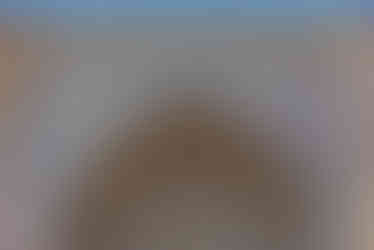























































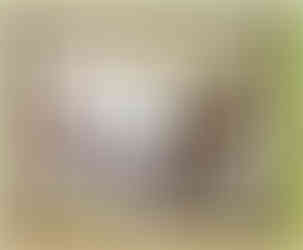


















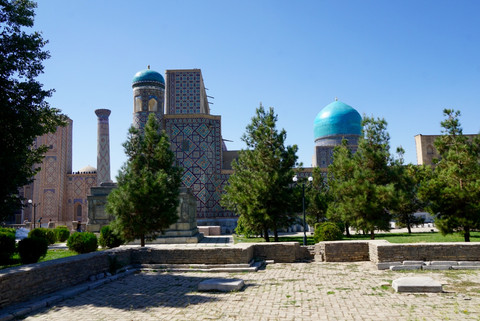



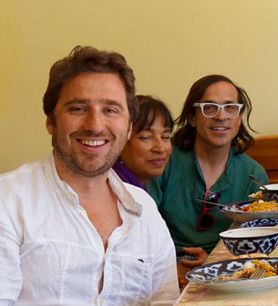



















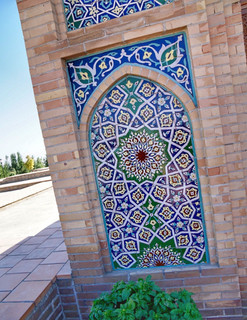





















































































































































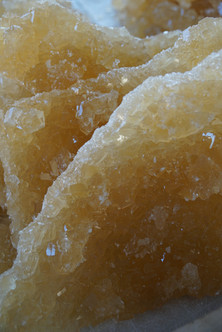

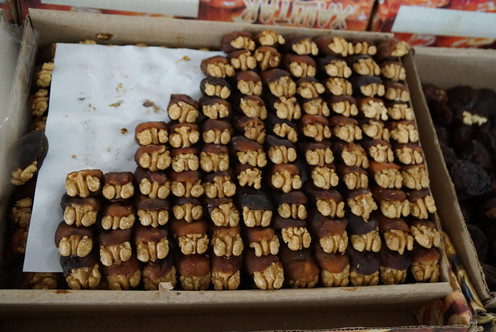












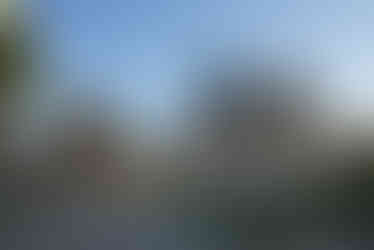






































Comments